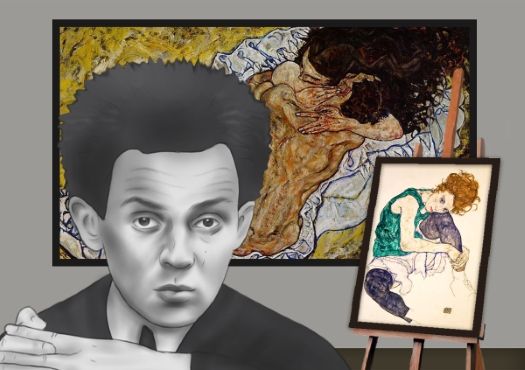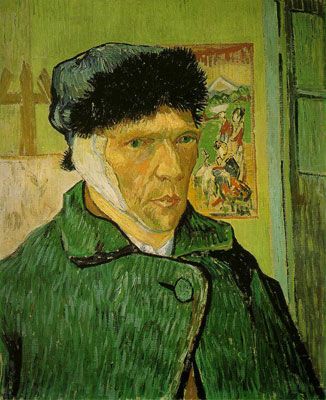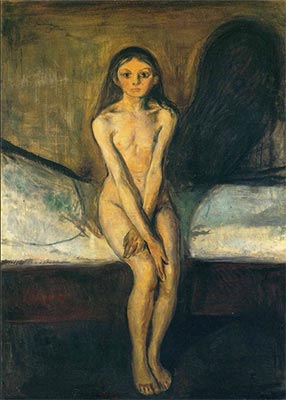Summary of Egon Schiele
With his signature graphic style, embrace of figural distortion, and bold defiance of conventional norms of beauty, Egon Schiele was one of the leading figures of Austrian Expressionism. His portraits and self-portraits, searing explorations of their sitters' psyches and sexuality, are among the most remarkable of the 20th century. The artist, who was astoundingly prolific during his brief career, is famous not only for his psychologically and erotically charged works, but for his intriguing biography: his licentious lifestyle marked by scandal, notoriety, and a tragically early death of influenza at age twenty-eight, three days after the death of his pregnant wife, and at a time when he was on the verge of the commercial success that had eluded him for much of his career.
Accomplishments
- Schiele's portraits and self-portraits helped re-establish the vitality of both genres with their unprecedented level of emotional and sexual directness and use of figural distortion in place of conventional notions of beauty. Frequently depicting himself or those close to him, Schiele's portraits often present their sitters in the nude, posed in revealing, unsettling angles—frequently viewed from above—and devoid of secondary attributes often depicted in the portrait genre. At times, Schiele used traditional motifs, giving the intensely personal images a more general, allegorical statement on the human condition.
- Creating some three thousand drawings over the course of his brief career, Schiele was both an extraordinarily prolific and unparalleled draughtsman. He regarded drawing as his primary art form, appreciating it for its immediacy of expression, and produced some of the finest examples of drawing in the 20th century. Even his painterly oeuvre revealed a style that captured some of drawing's essential characteristics, with its emphasis on contour, graphic mark, and linearity.
- Painter Gustav Klimt was the primary influence on Schiele's development, serving as Schiele's friend and mentor. While Schiele inherited Klimt's focus on erotic images of the female form (and shared Klimt's insatiable sexual appetite), the emotionally intense, often unsettling Expressionist idiom Schiele eventually developed, with its investigation of his sitters' inner life and emotional states, in some ways directly opposed his mentor's Art Nouveau–inspired style, with Klimt preferring a more brilliant palette and glimmering, patterned surfaces.
The Life of Egon Schiele

To counter what he called, “a mourning world,” Egon Schiele put his faith in art that “could only stem from intimacy,” as he uniquely combined torment and eroticism in his Expressionistic works.
Important Art by Egon Schiele
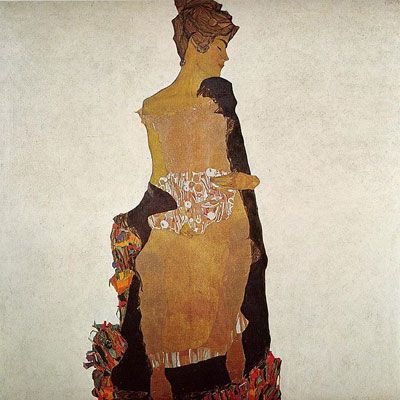
Portrait of Gerti Schiele
This is one of Schiele's many portraits of his younger sister, Gerti, the artist's favorite model during his early career and the member of his family with whom he was the closest. Painted when Gerti was a teenager, this early portrait demonstrates both the strong stylistic link between Schiele's work and that of Klimt, as well as the shift away from the style of his mentor. In her pose and adornment composed from a series of flat patches with gold and silver accents, Gerti's figure is reminiscent of Klimt's works such as Portrait of Adele Bloch-Bauer (1907). But unlike the Klimtian predecessor, the image is not so much decorative as static and soft, as if Schiele were casting his sitter in clay. In addition, Schiele replaced Klimt's richly shimmering, gold-dominated palette with more muted colors, creating an image that appears dried-out, suggestive of decay rather than growth.
Oil, silver, gold-bronze paint, and pencil on canvas - The Museum of Modern Art, New York
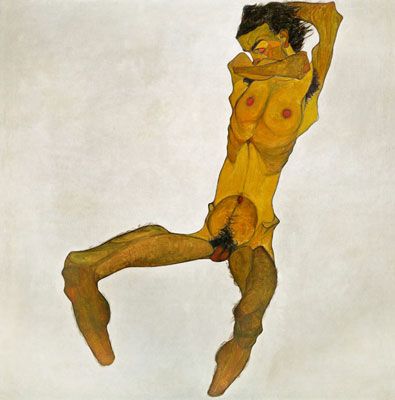
Self-Portrait
Schiele's self-portraits are extraordinary not only for the frequency with which the artist depicted himself, but for the manner in which he did so: eroticized depictions where he often appears in the nude, in highly revealing poses—male self-portraits virtually unparalleled in the history of Western art. In this drawing, the artist has created an intense and almost frightening vision of himself: emaciated, with glowing red eyes, legs deformed and footless, his body fully exposed, yet with his face partially hidden, perhaps suggesting a sense of shame, and in a twisting pose indebted, as many writers have suggested, to the important influence of modern dance. Characteristic of the Expressionist mode that Schiele was increasingly practicing at this time, he expresses his anxiety through line and contour, and flesh that appears abraded and subjected to harsh elements.
Black chalk, watercolor and gouache on paper - Leopold Museum, Vienna
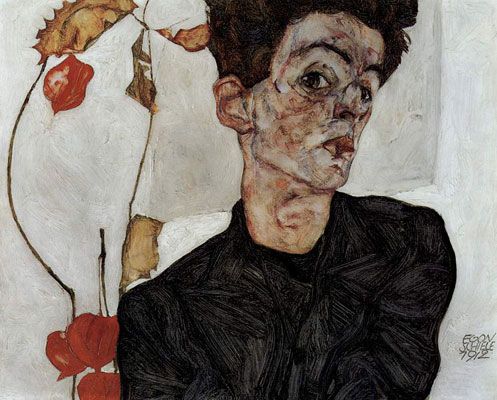
Self-Portrait with Chinese Lantern Plant
This is perhaps Schiele's most celebrated self-portrait, and certainly the most storied. In this work, painted during a time in which he was participating in numerous exhibitions, Schiele gazes directly at the viewer, his expression suggesting a confidence in his artistic gifts. Although Schiele deploys less distortion than in other self-portraits, the painting refuses to idealize its subject, featuring scars and other lines characteristic of the contoured manner of the artist's drawing style.
Exhibited in Munich in 1912 alongside work by a number of other Expressionist artists, the painting has a companion portrait depicting his lover at the time, Wally Neuzil (the Wally portrait was stolen by the Nazis from the home of a Jewish Austrian, only to be returned to Vienna in 2010 following a prolonged, twelve-year legal battle). It now serves as a "poster child" for the Leopold Museum in Vienna, which houses the largest Schiele collection in the world.
Oil on canvas - Leopold Museum, Vienna
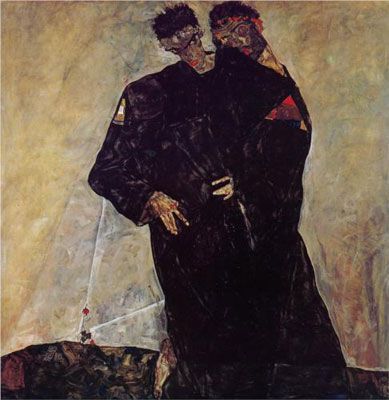
Hermits
This rare double portrait, among the most allegorical works in Schiele's oeuvre, shows Schiele and Klimt standing together, nearly as one. As close as the two men were, and for all their similarities, Schiele spent much of his career seeking to break free of Klimt's influence. In Hermits, both men wear their signature long black caftans, an item of clothing for which Klimt was known, and which Schiele appropriated for his own work, perhaps in tribute. Never one for modesty, Schiele positions Klimt in the background, blind and mostly hidden, as if being consumed by the younger artist. The resulting form evokes the image of a single dark figure, indicating the confident successor Schiele assuming the mantel of the old master. The hermit motif also evokes Schiele's existential conception of the artist as a figure existing at the margins of society.
Oil on canvas - The Leopold Museum, Vienna
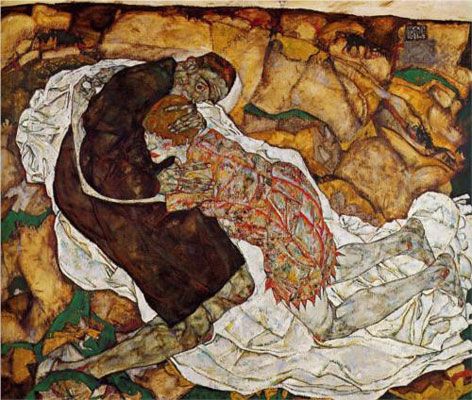
Death and the Maiden
In this painting, one of Schiele's most complex and haunting works, the female figure, gaunt and tattered, clings to the male figure of death, while surrounded by an equally tattered, quasi-surreal landscape. As elsewhere in his work, in this composition Schiele combines the personal and the allegorical—in this case by turning to a theme deriving from the medieval concept of the Dance of Death that reached its height in 15th-century German art. Death and the Maiden was painted around the time Schiele separated from his longtime lover, Wally Neuzil, and several months before he married his new lover, Edith Harms. The painting memorializes the end of his affair with Neuzil, seemingly conveying this separation as the death of true love. Interestingly enough, the manner in which Schiele's figures are nearly consumed by their clothing and abstracted surroundings suggests the portraiture of Klimt, who likewise placed his subjects within indecipherable environments.
Oil on canvas - Osterreichische Galerie, Belvedere, Austria

Town among Greenery (The Old City III)
Although his art centered on the human figure, Schiele—who had occasion to travel throughout Europe during his career—was also drawn to the land and cities. In fact, the artist's paintings of the countryside and his native Vienna comprise a significant portion of his work. This painting was inspired in part by his mother's hometown, Krumau, where he lived briefly in 1911. Schiele's landscapes—although often devoid of people—contain fascinating parallels with his figural work. His frequent use of a bird's-eye perspective in his landscapes calls to mind one of the most radical elements of his portraiture: his tendency to depict his sitters from above. This canvas contains other characteristic elements of Schiele's idiom as well, most notably, his use of boldly outlined and sharp contours. What causes this work to stand apart from his portrait work is the artist's use of and range of color, something for which Schiele was not known.
Oil on canvas - The Neue Galerie, New York
Biography of Egon Schiele
Childhood
Egon Schiele was born into modest means in Tulln an der Donau ("on the Danube"), a small but vibrant Austrian town also known as Blumenstadt, or "city of flowers." He was the third child born to Adolf Schiele, who worked as a stationmaster for the Austrian State Railways, and Marie Soukupova, who originally hailed from the Bohemian town of Cesky Krumlov (Krumau), now the site of the Egon Schiele Art Centrum, a museum dedicated primarily to the artist's work. Schiele had two older sisters, Melanie and Elvira, the former of whom often modeled for Schiele and eventually married Schiele's close friend, the painter Anton Peschka. Schiele also had a younger sister, Gerti (Gertrude), with whom he was very close, with some accounts calling the relationship incenstuous.
Although Schiele was never a prolific student, one of his primary school arts instructors recognized a natural gift for draughtsmanship in Schiele and encouraged him to pursue formal training. Following his father's death from syphilis, and having been placed under the guardianship of his uncle and godfather, Leopold Czihaczek, in 1906 Schiele enrolled in Vienna's Akademie der bildenden Kunste (Academy of Fine Arts), which Gustav Klimt had also attended.
Early Training
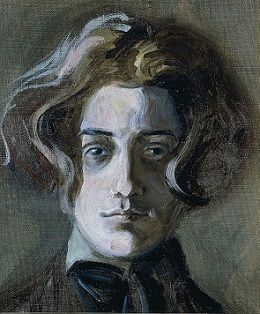
In 1907, Schiele sought out Klimt, whose work he already greatly admired, and the two quickly formed a mentor-mentee relationship that would have a major impact on the young artist's early development. Klimt not only exerted his influence over Schiele in the studio, but also in introducing Schiele to patrons, models, and the work of other artists—such as Vincent van Gogh, Edvard Munch, and Jan Toorop—about whom Schiele, despite being a devoted art student, had little occasion to learn, given Vienna's relative isolation from European avant-garde movements during this time. Through Klimt, Schiele was also introduced to the Wiener Werkstätte, the arts and crafts workshops of the Vienna Secession, a movement that had close ties to other modern art styles of the period.
In 1908, when Schiele was eighteen, he participated in his first exhibition, a group showing in Klosterneuburg, a small town to the north of Vienna. The following year, Schiele and a few fellow students left the Academy in protest, citing the school's conservative teaching methods and its failure to embrace more forward-thinking artistic practices that were sweeping through Europe. As part of this rebellion, Schiele founded the Neuekunstgruppe (New Art Group), composed of other young, dissatisfied artists defecting from the Academy.
The new group didn't waste any time, holding several public exhibitions throughout Vienna, all the while Schiele was exploring new modes of painterly expression, favoring distortions and jagged contours of form and a more somber palette than that of the more decorative and ornate Art Nouveau style. Essentially, Schiele was gradually distancing himself from the style popularized by Klimt, although the two men would remain close until Klimt's death in early 1918. If the content of Schiele's work is any indication, it appears that the mentor and mentee shared an insatiable appetite for women.
Mature Period
Shortly after forming the Neuekunstgruppe, Schiele began enjoying modest success as a painter and draughtsman, and in 1911 he had his first solo exhibition, at Vienna's Galerie Miethke, where the artist's increasing penchant for self-portraiture and sexualized—often approaching lewd—studies of young women were on display. While Schiele’s work scandalized Viennese society, at the same time he sold many of his explicit images to private collectors, as he wrote, “Doing an awful lot of advertising with my prohibited drawings,” when five newspapers critiqued his work. Schiele's early studies were also controversial for his use of children as nude models and for showing pubescent girls in implicitly erotic situations, as seen in his Nude Girls Reclining (1911) where two pubescent girls are depicted as if after an erotic encounter. That same year, Schiele lived briefly in his mother's hometown of Krumau in Southern Bohemia, where his practice of having young children visit his studio attracted disapproval from the local townspeople.
The following year was a crucial one for Schiele, both personally and artistically. In addition to participating in a number of group exhibitions—in Budapest, Cologne, and Vienna—Schiele was invited by Galerie Hans Goltz in Munich to show his work alongside members of the Der Blaue Reiter group of Expressionists, which included Wassily Kandinsky, Franz Marc, and Alexej von Jawlensky. Among Schiele's works at this time was his most famous Self-Portrait with Chinese Lantern Plant (1912), a captivating study of the artist, his face and other features replete with lines, scars, and subtle deformities. The Goltz show provided Schiele with his greatest exposure to date, revealing his rich use of personal symbolism and dark allegory to the public.
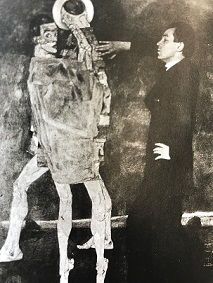
Also in 1912, while living in the Austrian town of Neulengbach, Schiele was arrested at his studio and imprisoned for twenty-four days, accused of the kidnapping and rape of a twelve-year-old girl (as in Krumau, Schiele's studio had become a gathering place for many of the town's children, attracting outrage from local residents). These charges were eventually dropped, and he was convicted of exposing children to erotic images. The police had confiscated 125 of his “degenerate” works, and in a symbolic gesture, the judge burnt one of his drawings in the courtroom (the work, showing a young girl nude from the waist down, had previously been displayed on his studio wall). The incident had a noted impact on Schiele, as he subsequently ceased his practice of using children as models, although the morbidity and sexual explicitness of his work — particularly in his drawings — appears to have increased following his release from prison.
Later Years and Death
Nonetheless, even though World War I loomed, his career flourished as he returned to Vienna. In 1913 he held his first solo exhibition in Munich and in 1914 a solo show in Paris. His personal life also took a turn, when 1915 he wrote to a friend, “I intend to get married, advantageously,” and proposed to Edith Harms, a young woman of good social standing. Though he hoped to continue his relationship with Wally Neuzil, she left him upon news of his engagement, a loss powerfully expressed in Death and the Maiden (1915).
Schiele was eventually conscripted into military service four days after his marriage. However, he never saw any real combat throughout the war's duration, and instead was allowed to continue practicing his art and exhibiting wherever he was stationed. Inspired by his wartime travels, Schiele produced a number of land- and cityscapes around this time, devoid of the artist's usual exaggerated contours.
By 1917, Schiele was back in Vienna and hard at work. That same year, he and Klimt co-founded the city's Kunsthalle (Art Hall), a new exhibition space designed to encourage Austrian artists to remain in their homeland. The following year, both poignant success and tragedy visited the artist in many forms. In February, a stroke and pneumonia claimed the life of his mentor and friend, Klimt. Just one month later, the Vienna Secession held its forty-ninth annual exhibition and devoted the main exhibition space to Schiele's work, making the affair a great commercial success. In October, his wife, Edith, six months pregnant, succumbed to the Spanish flu pandemic sweeping through Europe at the time, which claimed Schiele's life just three days later, dying at age twenty-eight. In the three days between their respective deaths, Schiele produced a number of sketches of his late wife.
The Legacy of Egon Schiele
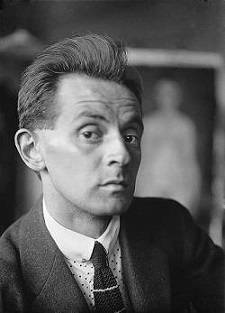
Despite Egon Schiele's short life, the artist produced an astonishing number of works on canvas and paper. He was instrumental in formulating the character of early-20th-century Expressionism, characterized by the use of irregular contours, an often somber palette, and frequently dark symbolism. Unlike his mentor, Klimt, with whom Schiele's name remains most commonly associated, he produced a great number of self-portraits, suggesting a preoccupation with the self on a par with the likes of Picasso. Schiele's aesthetic greatly influenced both Expressionist contemporaries like Oskar Kokoschka, as well as Neo-Expressionist successors as varied as Francis Bacon, Julian Schnabel, and Jean-Michel Basquiat.
Influences and Connections

-
![Francis Bacon]() Francis Bacon
Francis Bacon -
![Julian Schnabel]() Julian Schnabel
Julian Schnabel ![Gunter Brus]() Gunter Brus
Gunter Brus![Otto Muehl]() Otto Muehl
Otto Muehl
 Ask The Art Story AI
Ask The Art Story AI